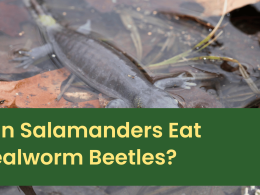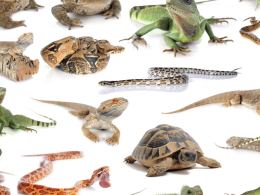What Salamanders Eat
Salamanders are fascinating creatures with specific dietary needs that must be met for them to thrive in captivity. If you’re curious about what to feed your slippery friend, you’ve come to the right place. Let’s delve into what constitutes a nutritious and appropriate diet for these unique amphibians.
Natural Diet of Salamanders
In the wild, salamanders adhere to a carnivorous diet that is rich in live prey. Depending on whether they are land-dwellers or water-dwellers, their diet may vary slightly. Land-dwelling salamanders typically feast on a variety of insects, including crickets, mealworms, and various types of worms. On the other hand, those that reside in aquatic environments tend to consume water-borne critters, such as nightcrawlers, bloodworms, and brine shrimp. It’s crucial to replicate this natural diet to provide your salamander with the nutrients it requires for optimal health (Hoschton Animal Hospital).
Live Insects as Primary Food
Live insects are the cornerstone of a salamander’s diet in captivity. Offering a diverse selection of live prey not only meets their nutritional demands but also encourages natural hunting behaviors, keeping them active and engaged. Here’s a list of live food options that you might consider for your salamander:
- Crickets: A staple in the diet of most insectivorous pets, including salamanders.
- Mealworms: High in protein, these larvae are a tasty treat for your salamander.
- Waxworms: Another larval option that can serve as an occasional treat due to their higher fat content.
- Earthworms: Packed with nutrients, earthworms are an excellent choice for salamanders.
Larger species of salamanders might also enjoy small aquatic creatures such as fish or even other amphibians. It is important to ensure that these larger prey items are appropriately sized to prevent choking or digestive issues.
When considering what to feed your salamander, it’s recommended to steer clear of foods like bread and processed foods, as well as fruits and vegetables, which are not part of their natural diet and can lead to health problems. Instead, focus on providing a variety of live insects and other appropriate prey items to ensure a balanced diet that mimics what they would consume in the wild.
Remember, feeding your salamander the right food is just one aspect of their care. Proper habitat setup, including water availability, is also crucial for their well-being. If you have any doubts about the best diet for your salamander or how to care for them, don’t hesitate to consult a veterinarian that specializes in exotic pets. They can provide you with personalized advice to keep your salamander healthy and happy.
Feeding Salamanders
Caring for salamanders means providing them with a diet that closely mimics what they would consume in their natural habitat. Understanding the importance of a varied diet, the dietary options for larger species, and the correct frequency of feeding can ensure your salamanders stay healthy and active.
Varied Diet Importance
Offering a range of food items to your salamanders is essential for their overall health. A monotonous diet can lead to nutritional deficiencies and health issues. Salamanders primarily feast on live insects, such as crickets, mealworms, and earthworms, which provide them with the necessary nutrients for their carnivorous lifestyle (Quora). When providing a diet for your salamander, aim to replicate their natural feeding habits as closely as possible to ensure they consume a balanced intake of proteins and nutrients.
Larger Species’ Diet Options
While most salamanders relish live insects, larger species may also enjoy small fish or amphibians as a part of their diet. It’s crucial to cater to the specific dietary needs of your salamander based on its size and species. They are hunters by nature and thrive on the challenge and nutrition that live prey offers. However, if live feeding is not an option, frozen or freeze-dried alternatives such as Brine shrimp and water fleas can be considered. Always ensure these are completely thawed and at room temperature before offering them to your salamander (Quora).
Frequency of Feeding
The feeding frequency for salamanders depends on their age and development stage. Juveniles or younger salamanders may require daily feedings to support their growth and energy needs. In contrast, adult salamanders typically only need to be fed two or three times a week, preferably at nighttime when they are most active (Hoschton Animal Hospital). It’s important to observe your salamanders and adjust the feeding schedule as needed to avoid overfeeding, which can lead to obesity and health issues. Additionally, ensure that your salamanders have constant access to clean, fresh, chlorine-free water to maintain their hydration.
By understanding the dietary needs of your salamanders and providing them with the appropriate food and feeding schedule, you can contribute to their well-being and longevity. For more information about what specific foods salamanders can and cannot consume, such as can salamanders eat bread, and for further feeding guidelines, explore our internal resources.
Foods to Avoid
When caring for your salamander, it’s paramount to understand not only what they can eat, but also what foods can harm them. A proper diet is essential for their health and well-being. Here, we’ll discuss the types of foods that you should avoid giving to your salamander, including fruits, vegetables, and processed foods like bread.
Fruits and Vegetables
You may think that incorporating fruits and vegetables into your salamander’s diet would provide them with essential nutrients. However, it’s important to note that salamanders’ digestive systems are not designed to process anything other than meat. This means that fruits and vegetables should not be a part of their diet.
To ensure that your salamander receives the nutrients typically found in produce, you can employ a method called gut loading. This involves feeding the insects that you will give to your salamander a nutrient-rich diet. By doing so, the nutritional benefits from the produce are passed on to the salamander when it consumes the insects. Additionally, dusting the salamander’s food with nutritional powders that do not contain vitamin D3 can supplement their diet with the necessary nutrients without the risk of toxicity (Hoschton Animal Hospital).
For more information on what salamanders can eat, including other dietary restrictions, visit can salamanders eat.
Bread and Processed Foods
When it comes to processed foods, such as bread, it’s best to steer clear. These items can be detrimental to a salamander’s health for several reasons. First and foremost, bread and similar processed foods do not contain the necessary nutritional value that salamanders require. Additionally, these types of foods are not part of a salamander’s natural diet and can be difficult for them to digest.
The question “can salamanders eat bread?” is one that might arise out of curiosity or from wanting to share human food with your pet. However, it’s crucial to understand that human food, including bread, is not suitable for salamanders and can potentially cause health issues. Always stick to their natural diet of live prey and avoid giving them any processed foods, including bread, to maintain their health (Hoschton Animal Hospital).
For a comprehensive look at safe and nutritious foods for salamanders, explore the resources on can salamanders eat mealworms, can salamanders eat dubia roaches, and can salamanders eat ants. Each of these links provides valuable guidance on feeding your salamander the right way to ensure they thrive under your care.
Specific Feeding Guidelines
When caring for your salamander, providing the right diet is crucial for their health and wellbeing. Below are guidelines on feeding your amphibian friend some of the best dietary options.
Earthworms and Brine Shrimp
Earthworms and brine shrimp are excellent sources of nutrition for salamanders and closely resemble what they would consume in their natural habitat. These live foods not only provide essential nutrients but also encourage natural hunting behavior, making mealtime both nutritious and mentally stimulating for your salamander.
| Food Type | Frequency for Adults | Frequency for Juveniles |
|---|---|---|
| Earthworms | 3 times a week | Daily |
| Brine Shrimp | 3 times a week | Daily |
Remember to source your earthworms and brine shrimp from reliable suppliers to ensure they are safe and free from pesticides or contaminants. For more information on what live prey to feed, check out can salamanders eat.
Calcium Powder Supplements
In addition to their primary diet, salamanders benefit from calcium powder supplements to ensure they receive adequate levels of calcium for strong bones and overall health. Lightly dust the live prey with the calcium supplement before feeding. This is especially important for growing juveniles that have higher nutritional needs.
Commercial Food Options
While live prey is the preferred option for feeding salamanders, commercial food options such as pellets are available. These pellets often contain processed insects and worms and can be offered to your salamander. However, they should not make up the majority of the diet, as salamanders are natural hunters and benefit from the activity of catching live prey. Some salamanders may also refuse to eat pellets, so it’s essential to provide a varied diet that includes live insects and freeze-dried foods.
| Food Type | Benefits | Considerations |
|---|---|---|
| Pellets | Convenient, Long shelf-life | Not all salamanders will accept them |
| Freeze-dried Insects | Alternative to live prey, Convenient | Less stimulating than live prey |
Always consult your veterinarian for recommendations on commercial food options and to tailor the diet to your specific salamander’s needs. For a comprehensive look at salamander diets, explore our articles on what salamanders can eat.
By following these specific feeding guidelines, you will help ensure that your salamander receives the nutrition they need to thrive. Keep in mind that a varied diet, rich in live prey and supplemented with the necessary nutrients, will contribute to the health and happiness of your pet salamander.
Salamander Health and Nutrition
The well-being of your salamander is deeply connected to its diet and nutrition. To ensure your pet thrives, understanding their nutrient requirements and the importance of water availability is essential.
Nutrient Requirements
Salamanders are carnivorous creatures that thrive on a diet similar to what they would find in the wild. This includes a variety of insects such as crickets, mealworms, and tubifex worms for those that dwell on land. Aquatic salamanders enjoy a diet of nightcrawlers, bloodworms, and brine shrimp (Hoschton Animal Hospital).
While salamanders’ digestive systems are not equipped to process fruits and vegetables, they still require the nutrients these provide. To bridge this gap, you can feed insects these plant-based foods before offering them to your salamander, a practice known as “gut loading.” Additionally, dusting your salamander’s food with nutritional powders, specifically those that provide calcium without vitamin D3, is crucial for bone health. It’s advised to steer clear of vitamin D3 supplements, as they can be harmful to amphibians. For personalized guidance on supplements, consulting a veterinarian is recommended.
Water Availability Importance
Hydration plays a pivotal role in a salamander’s health. These amphibians should always have access to clean, fresh, chlorine-free water. Not only is water crucial for drinking, but many salamander species also rely on moist environments to maintain their skin’s health and facilitate their unique respiratory process.
For adult salamanders, feeding two to three times per week, generally at night, is adequate, while juveniles may require daily meals. Pairing this feeding schedule with constant water availability ensures that your pet’s nutritional needs are met, and their habitat mimics their natural environment as closely as possible.
By adhering to these guidelines, you can help your salamander lead a healthy life. Remember, a well-balanced diet and proper hydration are the cornerstones of good nutrition, which in turn can pave the way for your salamander’s longevity and vitality. For more tips on what salamanders can eat and specific feeding practices, explore our other articles that cater to the needs of these fascinating creatures.
Salamander Feeding Tips
Caring for your salamander involves understanding their dietary needs and feeding habits. Here are some tips to help you provide the best nutrition for your amphibian friend.
Pellets vs. Live Prey
Salamanders thrive on a carnivorous diet that resembles what they would consume in the wild. You might wonder whether to offer them pellets or live prey. While commercial food options like pellets that contain processed insects and worms can be included in their diet, they should not constitute the majority of their nutrition. Live prey, such as crickets, mealworms, and brine shrimp, are essential to fulfill their natural hunting instincts and provide necessary nutrients. If you’re considering freeze-dried insects instead of live ones, it’s wise to consult your veterinarian for recommendations.
Feeding Schedule for Adults and Juveniles
Your salamander’s age plays a significant role in determining their feeding schedule. Adult salamanders typically require meals two or three times a week, and it’s best to feed them at nighttime when they’re most active. In contrast, juveniles or younger salamanders may need daily feedings to support their growth. Remember, clean, fresh, chlorine-free water should always be available, regardless of age.
| Salamander Age | Feeding Frequency |
|---|---|
| Adults | 2-3 times a week |
| Juveniles | Daily |
Consulting a Veterinarian
When it comes to supplements and specific dietary needs, your best resource is a veterinarian with experience in amphibian care. For example, salamanders require calcium powder supplements for bone health. However, it’s important that the calcium powder does not contain vitamin D3, which can be harmful to reptiles and amphibians. A veterinarian can guide you on the right type and amount of supplements to ensure your salamander’s optimal health.
Feeding your salamander involves more than just providing food; it’s about replicating their natural diet as closely as possible and understanding their unique needs. Whether you’re deciding between pellets and live prey, figuring out the appropriate feeding schedule for adults and juveniles, or seeking advice on nutritional supplements, always prioritize the health and well-being of your salamander. For more insights on what salamanders can and cannot eat, explore our resources on can salamanders eat a variety of foods.




